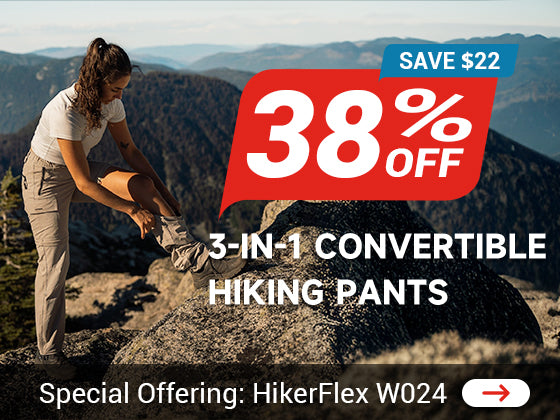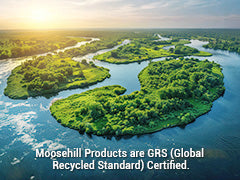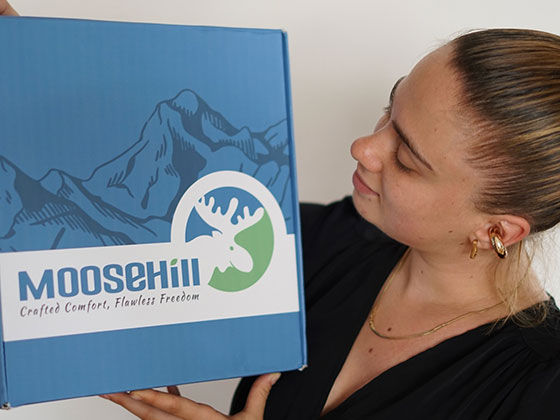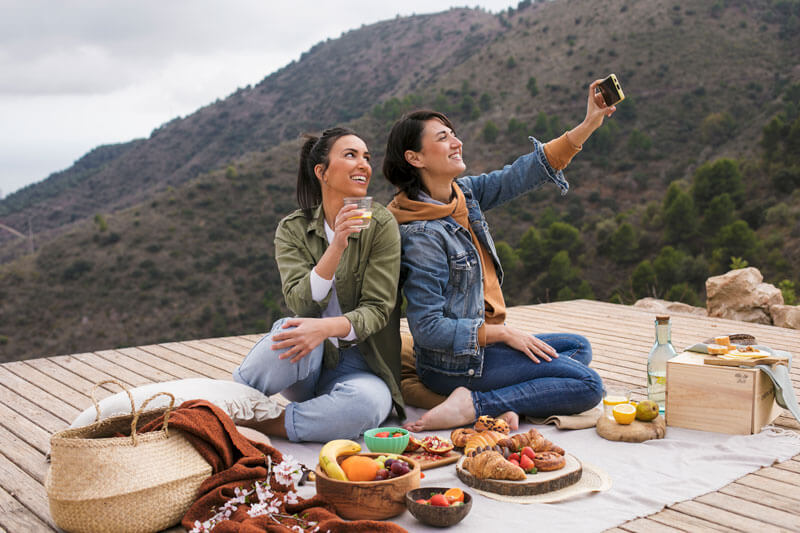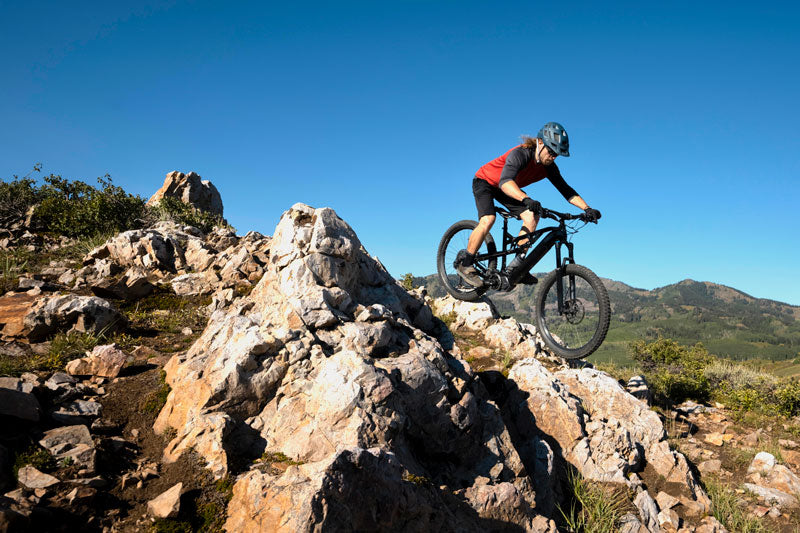LNT-Gesetz in der Natur
Was ist das LNT-Gesetz?
LeaveNoTrace (LNT) ist eine landesweite Bildungs- und Werbekampagne, die von US-Regierungsbehörden für Landmanagement auf allen Ebenen, Umweltbildungsexperten, Naturschutzgruppen, Herstellern und Händlern von Outdoor-Ausrüstung, Wandergruppen und der allgemeinen Öffentlichkeit initiiert wurde. Diese öffentlich-privaten, Industrie-Regierung-Akademie-Organisationen arbeiten seit den 1980er Jahren zusammen, um das Konzept des "No Trace Tourism" zu entwickeln und "Verantwortungsvollen Qualitätstourismus" zu fördern. Der Öffentlichkeit die richtigen Konzepte und Techniken für den Umgang mit der Umwelt zu vermitteln und dazu beizutragen, die Auswirkungen von Freizeitaktivitäten auf die Natur zu minimieren, hat im Laufe der Jahre erfolgreich gute Ergebnisse erzielt.
Hintergrund zum LNT-Gesetz:

Von 1965 bis 1994 hat sich die Outdoor-Bevölkerung versechsfacht, und Umfragen der Outward Bound School zeigten, dass 1965 9,9 Millionen Amerikaner an Wanderaktivitäten teilnahmen, und bis 1977 war diese Zahl auf 28 Millionen gestiegen. Alpenseen wurden durch menschliche Emissionen verschmutzt, einige Wanderwege waren kniehoch erodiert, Campingplätze waren von Gras befreit, und Müll aller Größen konnte oft gefunden werden, ein Phänomen, das Landverwalter vor ein Dilemma stellte, da sie versuchten, die Bedürfnisse der Touristen zu befriedigen und gleichzeitig die natürliche Umwelt zu erhalten.
In den frühen 1980er Jahren begann das ursprüngliche LNT-Programm des Forest Service, auf andere Outdoor-Programme übertragen zu werden. Während das Schließen bestimmter übernutzter Gebiete, Kapazitätskontrollen und die Begrenzung bestimmter Campingplätze wichtige Managementinstrumente für Landverwalter wurden, war die Umweltbildung der Besucher tatsächlich eine effektivere Lösung. In den frühen 1980er Jahren gab es unzählige Umweltbildungsprogramme, die in Landverwaltungseinheiten unterrichtet wurden, mit Slogans wie "Was du den Berg hinauf trägst, trägst du auch wieder hinunter", "Tritt leicht auf das Land", "Nimm nur Bilder mit und hinterlasse nur Fußspuren" und vielen anderen. Slogans wie "Wenn du etwas den Hügel hinauf trägst, trage es auch wieder hinunter", "Tritt leicht" und "Nimm nur Bilder mit, hinterlasse nur Fußspuren" sind vielen Wanderern vertraut. Im Jahr 1994 war die in Boulder, Colorado, ansässige gemeinnützige Organisation LeaveNoTrace, Inc. für die Koordination aller LNT-Einheiten, Lizenzierung und Fundraising-Bemühungen verantwortlich.
Schlüsselelemente des LNT-Gesetzes:
1. Im Voraus planen und vorbereiten

Alle Outdoor-Aktivitäten müssen im Voraus geplant und vorbereitet werden, die zu diesem Zeitpunkt geltenden Regeln und Vorschriften zum Umweltschutz verstanden, ausreichende Vorbereitungen für mögliche Situationen getroffen und die entsprechend der verstandenen Situation geeignete Ausrüstung ausgewählt werden. Gleichzeitig ist es notwendig, die Eigenschaften der Route im Aktivitätsgebiet vollständig zu verstehen und die Route sowie den Campingplatz entsprechend zu gestalten. Die Menge der mitzuführenden Lebensmittel sollte entsprechend der tatsächlichen Situation der Route geplant werden, anschließend erfolgt eine einfache Behandlung der Lebensmittel, und wenn möglich sollte die Verpackung zentralisiert werden, um die Müllentstehung so weit wie möglich zu minimieren. Kurz gesagt, die Vorausplanung und Vorbereitung sollten so erfolgen, dass sie nicht blind, illegal, verschwenderisch ist und gut vorbereitet wird.
2. Reisen und Camping auf erträglichem Boden
Bei Outdoor-Aktivitäten neigen wir manchmal dazu, unorganisierte Schneidewege zu wählen, um die Distanz und Schwierigkeit zu verkürzen, was nicht wünschenswert ist. Das LNT-Gesetz schreibt vor, wann immer und wo immer möglich, auf bestehenden Wegen zu gehen, keine Abkürzungen, kein direktes Auf- und Absteigen, und das Team wird beim Reisen nur eine einzige Route nehmen. Wenn der Weg in gutem Zustand ist und gleichzeitig der Rucksack nicht zu schwer ist, sollten weiche Sohlen in Betracht gezogen werden, um die Auswirkungen auf den Boden zu minimieren.
Beim Wandern auf nicht ausgewiesenen Wanderwegen wählen Sie Bereiche wie Felsvorsprünge oder Schutthalden, die menschlichen Fußverkehr aushalten können. In solchen Bereichen ist das Verteilen die beste Methode, um die Auswirkungen auf die Umwelt zu minimieren.

Bei Campingaktivitäten mit hoher Umweltbelastung ist die Wahl des Campingplatzes sehr wichtig, und wir verlangen im Allgemeinen, dass Campingplätze mehr als 50 Meter von einer Wasserquelle entfernt liegen, um Schadstoffe auszuschließen. Auf beliebten Routen sollte nur auf bestehenden Campingplätzen mit festem Boden gezeltet werden, um die Campingaktivitäten auf bereits beeinträchtigte Bereiche zu konzentrieren. Befindet man sich in einem Gebiet mit wenig menschlicher Aktivität, sollte man das Lager auf einem bisher ungenutzten Platz aufschlagen, anstatt auf einem leicht beeinträchtigten Platz. Das Lager sollte auf einem bestehenden Campingplatz aufgeschlagen werden, der sichtbare Spuren von bereits vorhandenen Campingplätzen aufweist, die manchmal Anzeichen von Feuerstellen zeigen. Handelt es sich um einen stark genutzten Campingplatz mit stark erodiertem Boden und freiliegenden Baumwurzeln, ist es wichtig, sowohl einen anderen Platz zum Zelten zu wählen als auch dem Campingplatz eine Ruhepause zu gönnen.
Die am besten geeigneten Orte zum Campen sind felsige, kiesige und sandige Gebiete, da sie sehr widerstandsfähig gegen menschliches Betreten sind. Weitere gute Optionen sind Heufelder, während weniger widerstandsfähig gegen menschliche Einflüsse bewaldete Gebiete mit üppiger Vegetation und einer blätterreichen Oberfläche sind.
3. Entsorgen Sie Müll ordnungsgemäß
"Trage, was du den Berg hinaufträgst, den Berg auch wieder hinunter" ist ein wichtiges Prinzip. Den Campingplatz im ursprünglichen Zustand zu erhalten, spiegelt die grundlegendste Qualität eines Campers wider. Die Entsorgung von Exkrementen, die in einem Katzenloch 10-20 Zentimeter tief und mindestens 60 Meter entfernt von einer Wasserquelle, dem Campingplatz oder dem Weg vergraben werden können, ist akzeptiert. Man sollte sorgfältig über Toilettenpapier nachdenken, die Natur bietet viele Möglichkeiten, um umweltfreundlicher zu sein, und wenn man Toilettenpapier verwenden muss, muss man es den Berg wieder hinuntertragen, was notwendig ist, um unsere Aufmerksamkeit darauf zu lenken.

Beim Umgang mit Lebensmittelabfällen versuchen wir, die Verpackung vor dem Verlassen zu minimieren und wählen nach Möglichkeit wiederverwendbares Besteck, planen die richtige Menge, um Abfall zu vermeiden. Bei Campingaktivitäten verwenden Sie so wenige Reinigungsmittel wie möglich, waschen Sie niemals Ihr Gesicht, putzen Sie Ihre Zähne, waschen Sie Ihre Kleidung oder Ihr Gemüse direkt in der Wasserquelle und leiten Sie das Abwasser in eine Erdgrube, die mehr als 50 Meter vom Campingplatz und der Wasserquelle entfernt und 25-30 cm tief ist. Lebensmittelreste sollten vollständig mitgenommen werden, selbst einige biologisch abbaubare Lebensmittel wie Fruchtkerne und Schalen müssen vollständig entfernt werden.
Beim Entsorgen von Exkrementen sollten während Campingaktivitäten temporäre Toiletten errichtet und Gruben gegraben werden, um die Exkremente zu bedecken. Der Standort der Toiletten sollte 60 Meter von Wasserquellen, Campingplätzen und Straßen entfernt gewählt werden. Um Sekundärverschmutzung zu vermeiden, sollte das verwendete Toilettenpapier ebenfalls so weit wie möglich verpackt und mitgenommen werden, anstatt es zu vergraben oder zu verbrennen.
Hinterlassen Sie einen sauberen Campingplatz und tragen Sie Ihren gesamten Müll den Berg hinunter, zusammen mit dem Müll, den andere hinterlassen haben. Legen Sie Ihren gesamten Abfall in einen einzigen Müllbeutel. Tragen Sie im Lager leichtere Schuhe mit flachen und weicheren Sohlen, wie Sportsandalen oder Laufschuhe, um die Auswirkungen des Auftretens auf den Boden zu minimieren, und leichte Zelte sind weniger belastend als altmodische Zelte aus Segeltuch. Wenn Sie einen Campingplatz in einem primitiven Gebiet verlassen, lockern Sie das Gras auf; füllen Sie die Löcher, die durch Campingheringe entstanden sind.
4. Die Natur so belassen, wie sie ist
Gib der Natur ihre Ursprünglichkeit zurück. Wenn wir uns auf dem Campingplatz befinden, sollten wir leichtere Schuhe mit flachen und weicheren Sohlen wählen, wie Sandalen, Flip-Flops oder Laufschuhe, um die Auswirkungen des Betretens des Bodens zu minimieren. Wenn du auf kulturelle und historische Spuren, von Menschen geschaffene Skulpturen, Gebäude usw. stößt, solltest du diese nicht ohne Erlaubnis berühren, geschweige denn darauf treten. Manchmal sehen wir während unserer Aktivitäten, dass einige Teammitglieder Blumen und Pflanzen pflücken oder die hohen Mauern des Felsgartens erklimmen, was unerwünscht ist und gestoppt werden sollte. Beim Errichten von Campingplätzen sollte auch darauf geachtet werden, keine Gräben zu graben, den Verlauf von Bächen und Flüssen nicht zu verändern, und beim Verlassen den Campingplatz so wiederherzustellen, dass er späteren Campern attraktiv bleibt, um das Ziel zu erreichen, andere Flächen nicht wesentlich zu beschädigen.
5. Feuer in der Wildnis
Verwenden Sie kein Feuer bei Aktivitäten in der freien Natur, denn Feuer ist im Allgemeinen ein großer Schock für die natürliche Umwelt. Nach einem Brand werden seine Spuren immer größer und verschwinden nie. Der dauerhafte Schaden, den Feuer dem Boden zufügt, kann bis zu 10 Zentimeter tief sein. Verwenden Sie daher bei Outdoor-Aktivitäten einen geeigneten Kocher zum Kochen, tragen Sie ausreichend Kleidung, um sich vor der Kälte zu schützen, benutzen Sie ein Zelt und einen guten Schlafsack, um warm und trocken zu bleiben, und verwenden Sie nicht leichtfertig Feuer.
Falls Sie Holz verwenden müssen, prüfen Sie zunächst, ob dies an Ihrem Standort erlaubt ist, ob es Brandsaison ist, und stellen Sie sicher, dass Sie abgestorbenes Holz als Brennstoff verwenden, anstatt lebende Bäume zu fällen; der ideale Brennstoff ist ein Ast, der dünner als Ihr Handgelenk ist. Beim Entzünden eines Feuers wählen Sie einen zentralen Bereich, in dem es Anzeichen eines Feuers gibt, und verstreuen Sie die Asche im Gras, nachdem das Holz vollständig verbrannt ist.
Bei Outdoor-Aktivitäten befürworten wir kein Rauchen. Neben dem "toxischen" Schaden, der durch Tabak selbst verursacht wird, bestehen Zigarettenstummel aus Acetatplastik, das nicht biologisch abbaubar ist. Gebrauchte Zigarettenstummel enthalten außerdem Blei, Quecksilber, Arsen, Aceton, Vinylchlorid, Formaldehyd und Blausäure im Rauch. Selbst wenn Sie rauchen müssen, sollten Sie sich von Ihren Teamkollegen fernhalten, um eine sekundäre Verschmutzung zu vermeiden, und die Zigarettenstummel müssen gesammelt und mit dem Müll den Berg hinuntergebracht werden.
6. Respektiere die Tierwelt
Bei Outdoor-Aktivitäten sollten wir die Gewohnheiten und die Umwelt der Wildtiere respektieren und ein friedliches Zusammenleben mit ihnen erreichen. Um auf den Schutz des Wassers zu achten, hängt der Schutz der Tiere von der Überlebensquelle ab. Unabhängig davon, ob Sie Wildtiere sehen oder nicht, sollten Sie wissen, dass Ihr kurzer Besuch die lokale Tierwelt unvermeidlich beeinflussen kann. Wenn Sie nicht weit von der Wasserquelle campen, versuchen Sie, nur einmal hin und zurück zur Wasserquelle zu gehen, um die Störung der Wildtiere zu minimieren. Tragen Sie zusammenklappbare Wasserbeutel, die mit Wasser gefüllt sind, anstatt direkt mit Töpfen und Pfannen hin und zurück zur Wasserquelle zu gehen, um nur einmal hin und zurück zur Wasserquelle zu gehen und die Störung der Tiere zu reduzieren. Einmal, um die Störung der Tiere zu minimieren.
Füttern Sie auch niemals wilde Tiere, egal wie niedlich sie sind, sie sollten nicht frei gefüttert werden, denn gerade diese wilden Tiere werden leiden, sobald sie ihre Überlebensfähigkeit verlieren. Am Campingplatz sollten alle Lebensmittel und Lockstoffe ebenfalls an einem sicheren Ort aufbewahrt werden, um zu vermeiden, dass die einheimische Tierwelt sich daran gewöhnt, den Campingplatz zu besuchen.
Beobachten Sie aus der Ferne, vermeiden Sie das Füttern und koexistieren Sie friedlich mit der Tierwelt.
7. Berücksichtigen Sie andere Personen im Bereich
Bevor Sie mit Outdoor-Aktivitäten beginnen, sollten Sie die lokalen Bräuche vollständig verstehen, die lokalen ethnischen Bräuche respektieren, die Lebensgewohnheiten und Sitten anderer achten und gute Gewohnheiten entwickeln. Stören Sie andere nicht durch Unterhaltung im Campingbereich, minimieren Sie Geräusch- sowie visuelle Störungen und tun Sie alles, was Ihnen einfällt, um die Natur sowie den Campingplatz ruhig zu halten, da dies der Grund ist, warum die meisten Outdoor-Enthusiasten der Natur nahe sind.
Die Achtung und Fürsorge für die Natur sowie die Erhaltung des ökologischen Gleichgewichts sind die Verantwortung von uns Outdoor-Enthusiasten. Ob in der Stadt oder im Freien, wir sollten den Umweltschutz fördern, bei uns selbst anfangen, andere durch unser Handeln beeinflussen und das richtige Umweltbewusstsein verbreiten, damit unsere Kinder und Enkel die blaue Luft und das grüne Wasser genießen können.
Für Outdoor-Aktivitäten hinterlasse nichts als Fußspuren; nimm nichts mit außer Fotos und frischer Luft!
--- ENDE ---
Für weitere Details zu Wanderausrüstung , bitte klicken hier die am besten passenden Produkte auszuwählen!

【Wandertipps】
· Die goldenen Regeln für das Wandern im Jahr 2024
· Wandertipps für Anfänger
· Top 7 der häufigsten Fehler beim Wandern
【Fahrradtipps】
· Welche Shorts tragen Mountainbiker?
· Warum sind Mountainbike-Shorts gepolstert und nicht der Sitz?
· Bequem und stilvoll: 5 Expertentipps für Fahrradhosen
【Golfberatung】
· Tragen Sie beim Golfen Hosen oder Shorts?
· Kurzanleitung: Die perfekten Golfhosen auswählen
· 4 Tipps zur effizienten Auswahl Ihrer Golfbekleidung und Accessoires
【Ski- & Schnee-Tipps】
· Welche Hosen sind gut für Schnee
· Können Schneehosen als Regenhosen verwendet werden?


